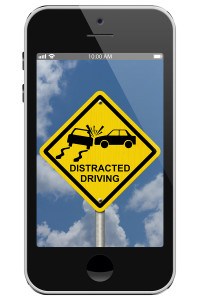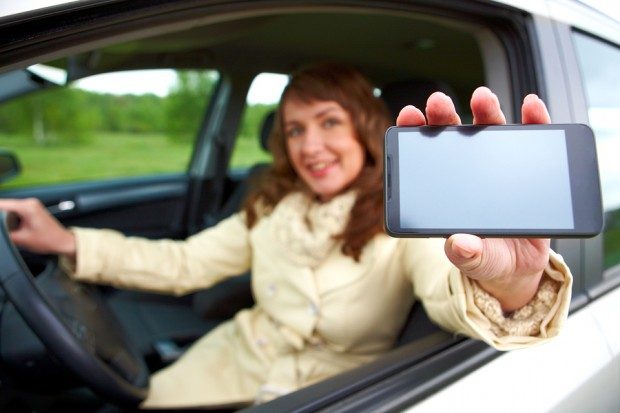Smartphones have transformed the way we interact with the world. They’ve replaced our watches and wallets. They’ve become portable movie theaters and libraries. They’ve even redefined how we interact with each other.

And with such a seismic shift in personal behavior comes new habits—not all of them positive. Smartphone use by drivers is at an all-time high, as an April 2017 Zendrive study revealed that 88 percent of drivers use their phones while behind the wheel on every trip. This rise in distracted driving sees a clear correlation with the increase in crashes happening on roads. There was a 14 percent spike in U.S. collisions from 2014 to 2016—the single biggest two-year jump in five decades, according to the National Safety Council. As a result, more than 40,000 Americans were killed in car collisions in 2016.
On paper, the solution to reducing collisions may seem as simple as banning smartphone usage by drivers. But a number of states have done this already with at best mixed results.
So, what if we could use this same technology to save lives? What if smartphone usage could be harnessed to generate the kind of insights that can reduce collisions, predict risks before they occur and ultimately prevent loss of life? The data that has become the industry standard today isn’t capable of this kind of precise analysis. But by shifting industry standards toward a different, more ubiquitous set of data, insurance carriers will now be able to do just that.
Partnerships with a variety of consumer apps as well as commercial fleets mean that data collection isn’t limited to one carrier or company. More data means better analysis and insights. Progressive Insurance last year announced that it had collected 15 billion driving miles in nearly two decades. Smartphone data collection led to 15 billion driving miles in under three years, meaning the data is also more current and relevant to the roads of today.
So, getting more data is great for prediction, but even more important is having the right data. Unlike OBD, only smartphones measure the worst cause of collisions today: distracted driving. A study by the University of Illinois, Urbana-Champaign showed that smartphones can also predict everything else OBD measures just by using the other sensors, so now we have more data that’s more recent and also more comprehensive.
With better data as well as advances in machine learning and AI, we can now do much more to predict future crashes on a per-driver basis. Leading actuary Milliman found that this kind of analysis for collisions is up to six-times more predictive than the current industry standard.
So, what does this all mean?
- Insurance companies that use this type of data and analysis can measure driver risk with more precision, saving their safe drivers money as a result.
- Fleet managers can see who their worst drivers are and coach them toward safer driving behavior.
- Any individual who has their own data can see what their unconscious habits are (like using their phone while driving) so they can improve.
- This type of granular, ubiquitous data is helpful when getting autonomous vehicles ready to share the road with human drivers and their foibles.
Insurance companies, fleet managers, automotive manufacturers, city planners and anyone else involved in the safety of our streets can all use this data to not only predict but also prevent collisions. This predictive power means we have the knowledge and tools to make roads safer and save lives.





















 Viewpoint: Mapping Evolving Regulatory Terrain for MGAs, MGUs and Other DUAEs
Viewpoint: Mapping Evolving Regulatory Terrain for MGAs, MGUs and Other DUAEs  Viewpoint: Agentic AI Is Coming to Insurance Industry – Much Faster Than You Think
Viewpoint: Agentic AI Is Coming to Insurance Industry – Much Faster Than You Think  Berkshire Hathaway Announces Leadership Appointments: New CEO at GEICO
Berkshire Hathaway Announces Leadership Appointments: New CEO at GEICO  Demystifying the Data Landscape: Lake, Warehouse and Lakehouse Explained
Demystifying the Data Landscape: Lake, Warehouse and Lakehouse Explained 

